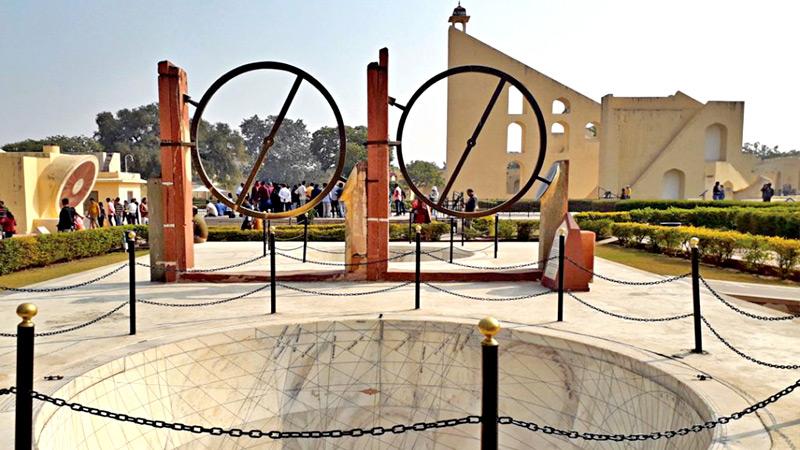
Jantar Mantar is a magnificent astronomical observatory located in Jaipur, Rajasthan, India.
 Built in the early 18th century during the reign of Maharaja Jai Singh II, the observatory has become a symbol of India’s rich scientific and cultural heritage. The primary purpose of Jantar Mantar was to observe and study the celestial bodies, measure time with great precision, and calculate the positions of the stars and planets accurately. It was also essential to make precise predictions for astrological and religious events.
Built in the early 18th century during the reign of Maharaja Jai Singh II, the observatory has become a symbol of India’s rich scientific and cultural heritage. The primary purpose of Jantar Mantar was to observe and study the celestial bodies, measure time with great precision, and calculate the positions of the stars and planets accurately. It was also essential to make precise predictions for astrological and religious events.
History
The construction of Jantar Mantar began in 1727 and was completed in 1734. Maharaja Jai Singh II was a prominent patron of astronomy and had a keen interest in the subject. He invited renowned scholars and mathematicians from all over India to design and build the astronomical instruments at Jantar Mantar.
 The observatory comprises 19 instruments made of stone and brass. The instruments were designed to make precise observations of the celestial bodies and are arranged in a way that allows them to function as an outdoor laboratory.
The observatory comprises 19 instruments made of stone and brass. The instruments were designed to make precise observations of the celestial bodies and are arranged in a way that allows them to function as an outdoor laboratory.
Description and use of each instrument
Samrat Yantra: The Samrat Yantra is the largest instrument at Jantar Mantar and is a massive sundial that measures time with incredible accuracy. The sundial is approximately 27 metres in height and can measure time to within a few seconds of the actual time.
The Samrat Yantra consists of a massive triangular gnomon that casts a shadow on a graduated quadrant. The shadow indicates the time, and the quadrant provides a scale to measure the shadow’s position.
Jai Prakash Yantra: The Jai Prakash Yantra is a concave hemispherical bowl that is used to measure the position of stars and planets. The bowl is precisely constructed to measure the position of a celestial object to within a few seconds of arc. The instrument is used to determine the altitude and azimuth of celestial objects and is designed to provide accurate readings even in bright sunlight.

Ram Yantra: The Ram Yantra is used to measure the altitude and azimuth of celestial objects. It consists of two large, circular stone discs arranged at right angles to each other. By sighting through the small hole in the centre of the discs, an observer can determine the altitude and azimuth of a celestial object accurately.
Misra Yantra: The Misra Yantra is a unique instrument designed to measure the shortest and longest days of the year accurately. The instrument consists of two parallel walls that are aligned with the equinox. The walls have a small opening through which sunlight falls. By measuring the length of the shadow cast by the wall, an observer can determine the exact date of the solstice.
Narivalaya Yantra: The Narivalaya Yantra is used to measure the positions of celestial objects at different times of the day. It consists of two parallel walls with an opening through which sunlight passes. The instrument’s walls are aligned with the meridian, and by measuring the length of the shadow cast by the wall, an observer can determine the exact time of day.
World Heritage site
Jantar Mantar was declared a UNESCO World Heritage Site in 2010. The recognition was given to Jantar Mantar due to its historical and scientific significance. The observatory is an outstanding example of the astronomical knowledge and techniques developed during the 18th century in India. The site showcases the scientific and technical advancements made by ancient Indian astronomers, which had an impact on the world.
Popular among tourists
Today, Jantar Mantar is a popular tourist destination in Jaipur, and it attracts visitors from all over the world. The observatory is a fascinating place to visit for anyone interested in astronomy, science, and history. The Jantar Mantar provides an opportunity for visitors to learn about the scientific and technical advancements made by ancient Indian astronomers, which makes it a must-visit destination for anyone visiting Jaipur.
